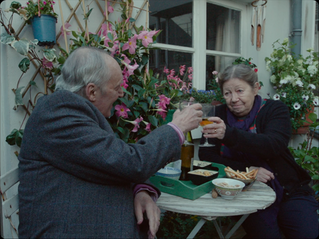3 Women
- Isobel Wise
- Jan 1, 2021
- 2 min read
Updated: Feb 2, 2021
Robert Altman, 1977

Despite its title, Robert Altman’s exquisite tale of personality theft does not figure as a filmic-triptych, but rather denies such a regimented handling. Time and action amble drowsily through desert landscapes, mundane dialogue does little to propel the plot, and characters proffer negligible activity for large sections of the run time.
In need of a roommate, Millie (Shelley Duvall), accepts the request of Pinky (Sissy Spacek), a newcomer from Texas who arrives without past or identity. Millie is relentlessly self-absorbed, her incessant and indiscriminate babbling is peppered with recipes, anecdotes, and shopping lists, speaking at rather than to those around her. Oblivious to the irritation her charm, or rather lack thereof, induces, Millie floats through her life under the assumption that her fabricated flirtations and adopted sophistications will, naturally, manifest themselves into reality. Pinky is the impish and naive outsider, new to the spa at which Millie also works. Provided with a bathing suit that is too big, Pinky is paired with Millie to learn how to take clients into the swimming pools. She quickly becomes infatuated with Millie, and enjoys being in the orbit of “the most perfect person” she has ever met. Willie (Janice Rule), introduced as the mute and pregnant wife of Millie’s apartment building owner, makes for the third woman, a character whose time is spent painting murals. As the film progresses, the personalities of the three women morph in and out of each other, each identity in a state of perpetual flux, alarmingly at risk of being purloined by another.

Filmed in Palm Springs, the film is deliberately overexposed, costume designer Scott Bushnell injecting the desaturated colours of the desert into the wardrobes of the women. In an array of yellows, pinks and purples, Millie’s prairie-style blouses are complete with puffy sleeves, lace trims and matching midi skirts — her wardrobe is nothing if not florid. A serenade in the key of yellow, her apartment is a emporium of matching drapes, countertops, carpeting, picture frames, bedspreads, lampshades, and accessories. An outfit of lemon-drop gingham trousers, coordinating bralette and collared jacket sees Millie’s apartment restated in miniature upon her lanky, tanned form. Her precise preening is beheld by Pinky, whose own wardrobe is a simpler and less fussy affair. Babydoll dresses in creams and shades of bubblegum and rose are paired with sandals and long-flowing hair. Borrowing Millie’s housecoats, Pinky starts to emulate her roommate’s actions and phrases, desperate to assimilate into her world.
Whilst superficially a soft and somnolent portrayal of femininity and the Californian desert, 3 Women progresses to reveal a haunting and understated insidiousness. Identity, so bound up in clothing and interiors, is easily appropriated and worn by strangers. At the beginning, Pinky’s desire to wear something that fits extends only to her bathing suit, by the end, clothing and personalities are interchangeable.









Comments